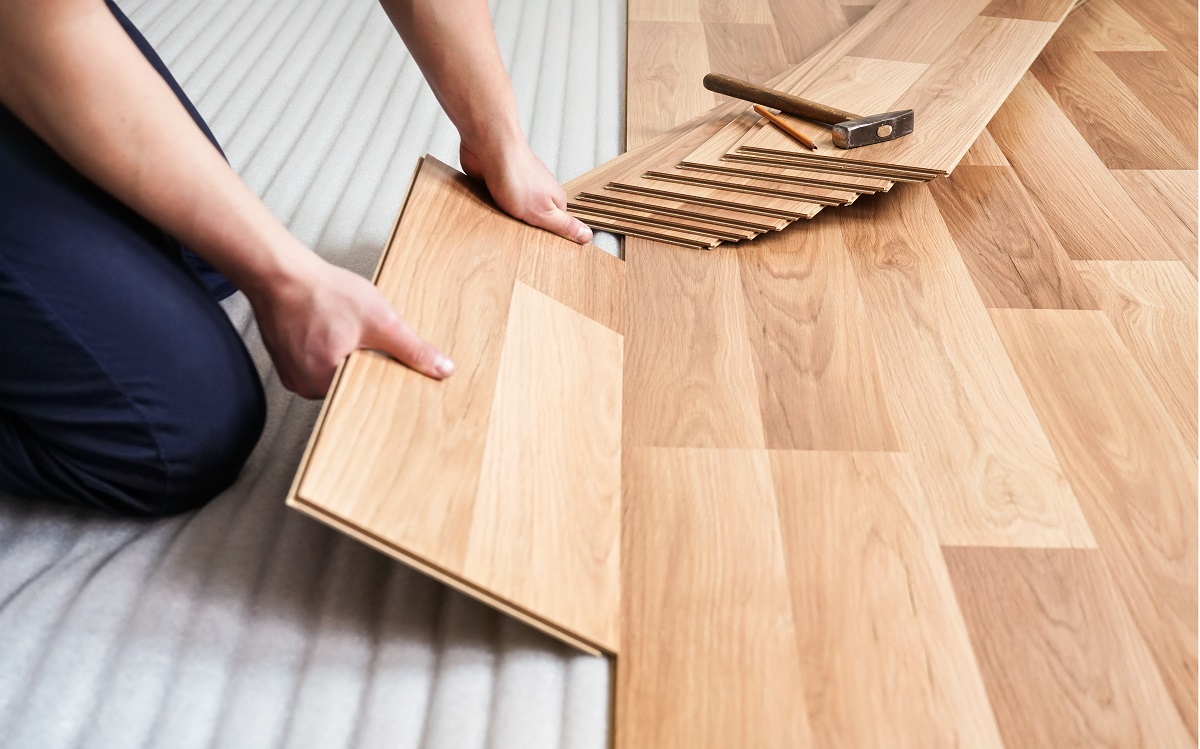
Laying down a new floor isn’t as simple as it sounds. A lot of work, care, and professionalism goes into installing a new floor, no matter what type of surface has been selected. One of the most important parts of the process is to install new flooring without causing damage; after all, there is little point in laying down a lovely new surface for it only to be ruined because the proper care wasn’t taken. In this guide, we explain how to lay a new floor without causing any damage, from preparing the floor to using temporary floor protection products once the flooring has been laid.
Prepare the floor
As with most things in life, taking the time to prepare is key, and the same goes for laying down new flooring. You can’t just start laying the new flooring down, first of all, you will need to strip away any existing flooring that is in place. It’s also important that you guarantee that the subfloor is suitable for laying down the new flooring. This involves ensuring that the floor is both dry and flat. If there is moisture in the floor, the surface can become warped and damaged over time, and it needs to be flat so that your flooring boards can be secured correctly – so take the time to smooth out the whole area.
Consider using a moisture barrier
For those who will be laying a floor over a moisture-prone surface, you will need to consider if it’s worth using a moisture barrier. A moisture barrier (or a vapour barrier) is a material that is used to protect the flooring from dampness by slowing the moisture down. It is typically in the form of a plastic sheet and some underlayment is also designed to act as a moisture barrier. Areas that typically need a moisture barrier include basements and attics but anywhere that is prone to dampness will benefit from their presence.
Let the flooring acclimatise to the room
If you want to know how to lay a new floor without causing damage, one of the very best tips is to let the flooring acclimatise to the room that it will be laid in before you get started. Due to changes in temperature, wood can start to warp or bend, and this can cause the flooring to become damaged. To reduce the risks as much as possible, let the flooring rest in the room for a day or two before laying it down, especially if it is coming from somewhere cold like a warehouse.
Leave an expansion gap

As flooring will naturally expand and contract with changes in temperature and moisture levels, it’s important that you leave an expansion gap when laying the flooring down to avoid causing damage. You simply need to leave a small gap around the perimeter of the floor to account for the expansion, giving the flooring the space to do its thing.
There is no need to leave a gap between boards, just a gap of approx. 10-12mm around the perimeter. The gap can be covered easily by the likes of skirting boards and beading so there is no need to worry about the gap.
Leaving an expansion gap is essential for laminate flooring in particular as without the gap there is no room to allow for movement which can cause laminate floorboards to rear up, causing a bounce. A lack of expansion gap is a sign of a poor-quality installation so make sure you avoid this error. So, if you are wondering how to install laminate flooring without causing damage, make sure that expansion gap is in place.
Use furniture pads for items that can’t be moved
Ideally, all furniture will be removed from the room which is receiving a new floor. However, when certain bulky furniture can’t be removed from the room, taking steps to ensure it doesn’t cause damage to the floor is essential. A good option is to consider using furniture pads for rooms with hardwood and laminate flooring, allowing the furniture to be moved around the room as the new flooring is being laid. The furniture pads attach to the legs and will prevent any scratches and scrapes from being inflicted on the new floor as the furniture is being moved around.
Give yourself plenty of time
Once you have laid down the new floor, it’s not necessarily ready to be walked all over. If your floor needs to dry or cure, it can take up to 30 days depending on the type of material and finish used. During the curing phase, the flooring’s finish hardens, and the solvents evaporate. Once it has properly cured, you can use the floor without causing any excessive damage. So, make sure that you have factored in time to let the floor cure before finishing the job and allowing the floor to be used.
Common mistakes when laying laminate flooring

As laminate flooring is one of the most popular types of floors today, we thought we would highlight some typical mistakes people make to help you avoid causing any damage or a poor installation. Here are common mistakes when laying laminate flooring that you should avoid:
- Laying laminate floors in rooms with moisture
- Forgetting to seal floors against moisture
- Not letting the flooring acclimatise to the room
- Not using an underlay
- Not leaving an expansion gap
- Not utilising temporary floor protection while other jobs are completed
Utilise temporary floor protection
Once the floor is laid down, you may have other jobs to complete around the building or there might be lots of foot traffic between now and when the project is finished. If so, make sure that you utilise temporary protection products to keep the floor covered for as long as possible.
For general use on lots of different floor types, you can consider using Correx protection sheets, which are made from strong corrugated polypropylene. They provide great protection from knocks, scratches, and spills and Correx is easy to cut and adapt for any room or surface shape.
For floors that need time to breathe and cure, using a breathable protection board is an ideal choice. Featuring micro-perforated breathable holes, these protection boards allow condensation underneath to be quickly dispersed, making sure the curing process goes ahead smoothly while the floor is protected.
For newly laid flooring, a card floor protection material will help keep the surface looked after during general site activity. The card can be used on most surfaces and is particularly appropriate for vinyl flooring, but it is also a very useful for newly laid screed flooring as the card is breathable, allowing the screed the time it needs to be properly cured.
Tips for laying a new floor without causing damage
- Prepare the floor
- Consider using a moisture barrier
- Let the flooring acclimatise to the room
- Leave an expansion gap
- Use furniture pads for items that can’t be moved
- Give yourself plenty of time
- Utilise temporary floor protection
Hopefully, the above tips will help you to perform the best floor installation job possible and avoid causing any unnecessary damage. If you want to keep everything in the best condition possible during your project, browse our range of surface protection products.
For more tips, guides, and advice, make sure to visit our news page.






